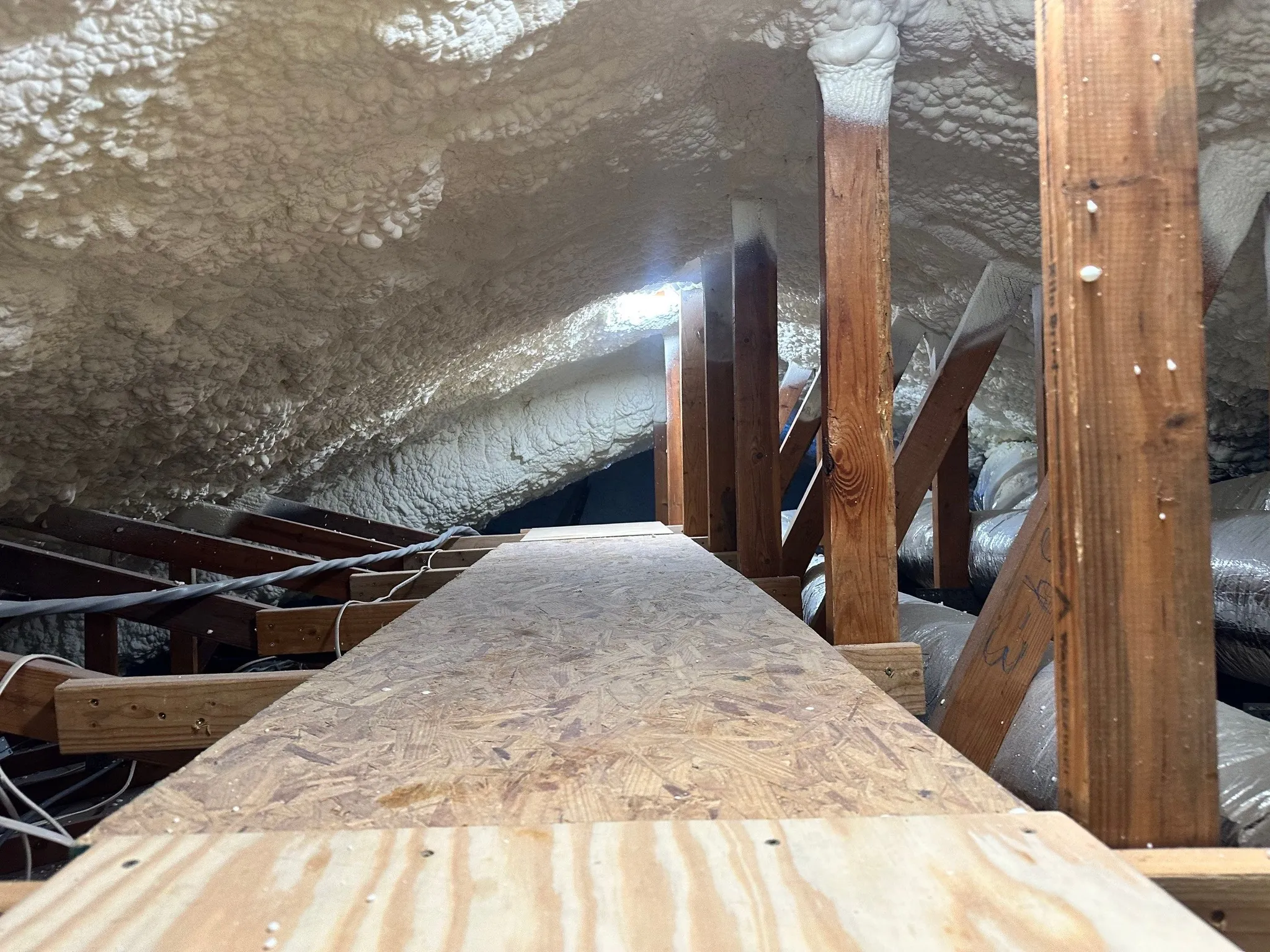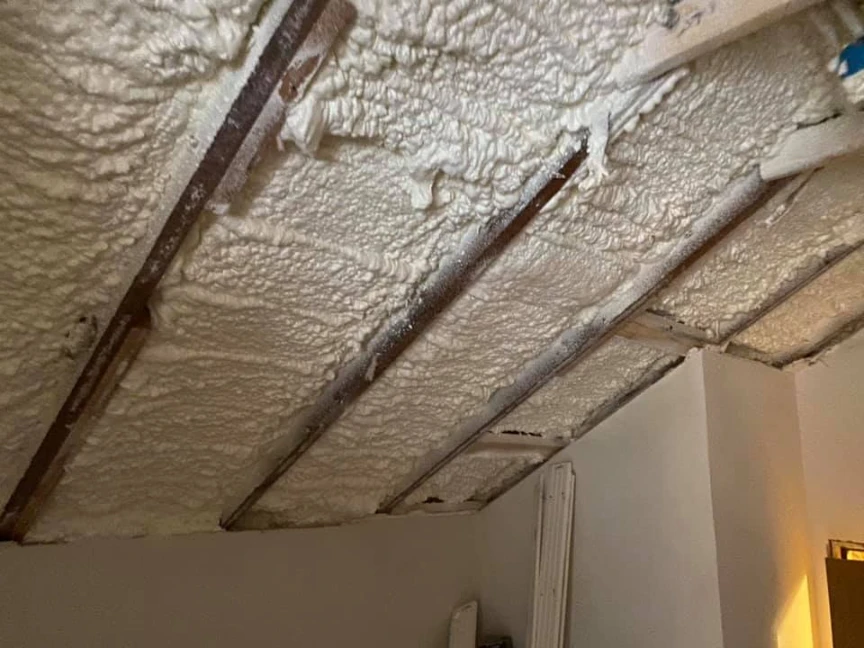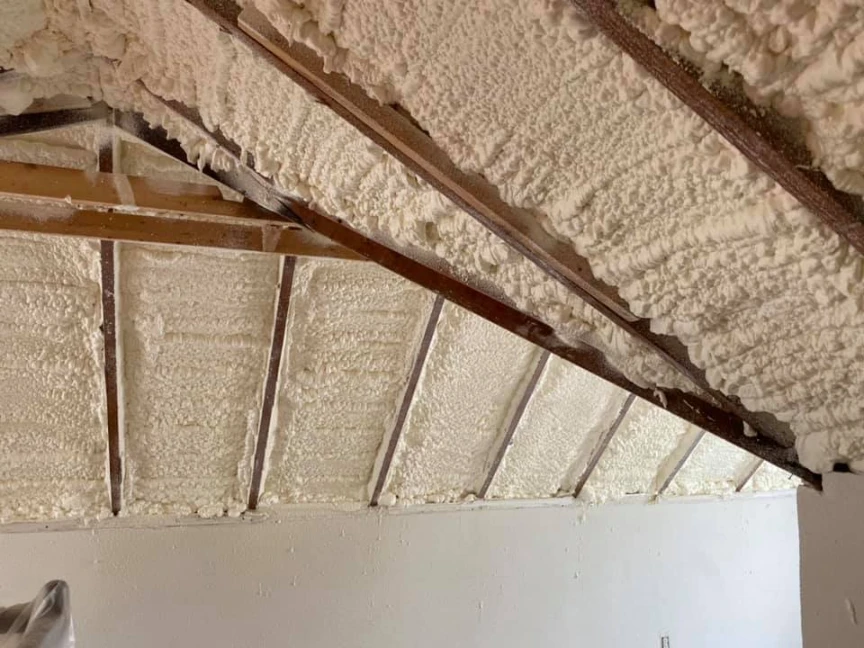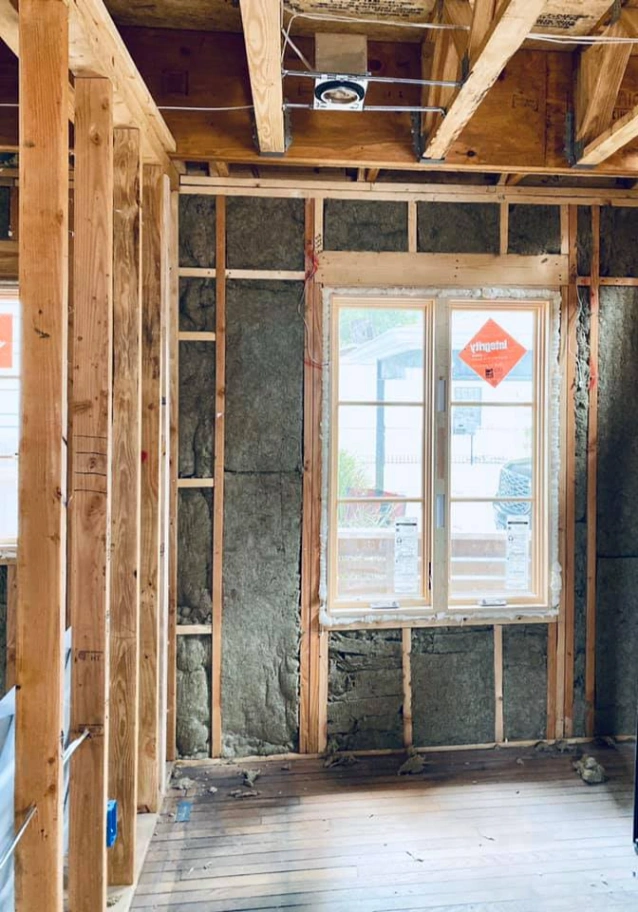Open-cell spray foam stands out for its ability to seal air leaks effectively while allowing moisture to escape, making it a strong choice for homes in humid climates. It expands to fill gaps in walls and attics, creating a barrier against drafts and temperature swings. Compared to fiberglass batts, which often leave air pockets and can sag over time, open-cell foam provides better coverage without the need for perfect spray foam installation. Cellulose blown-in insulation absorbs moisture, which helps in damp areas but risks mold if not dried properly, unlike the breathable nature of open-cell foam. Closed-cell spray foam, on the other hand, offers higher insulation value per inch but costs more and blocks moisture entirely, which suits drier regions better.
This article breaks down these differences with practical details drawn from years of hands-on work in insulation projects across Texas. Readers will find clear comparisons, data-backed facts, and tips to weigh options for their own spaces. Stellrr draws on extensive field experience to share reliable guidance here, ensuring every point reflects real-world applications rather than theory alone.
Understanding Open-Cell Spray Foam
Open-cell spray foam starts as a liquid mixture that workers spray into place with specialized equipment. It expands up to 100 times its volume, forming a soft, sponge-like material with tiny air pockets. This structure gives it an R-value around 3.5 to 4 per inch, which measures how well it resists heat flow. In practice, installers apply it in attics, walls, and rim joists to block conditioned air from escaping.
One key benefit shows up in energy savings. A study by the U.S. Department of Energy notes that proper air sealing cuts heating and cooling costs by up to 20 percent. Open-cell foam achieves this without adding much weight, so it works well on older structures that can’t handle heavy loads.
In Texas summers, where humidity hits 80 percent or more, open-cell foam’s vapor permeability prevents trapped moisture from building up behind walls, reducing rot risks in wood frames.
Key Differences with Fiberglass Insulation
Fiberglass comes in batts or rolls, made from spun glass fibers that trap air for insulation. Homeowners staple or friction-fit these into stud bays, but gaps often remain around edges. Over years, the insulation material can settle or compress, lowering its R-value from the rated 2.9 to 4.3 per inch.
Open-cell foam outperforms here because it adheres directly to surfaces and expands to seal every crack. Field tests reveal fiberglass allows 30 to 50 percent more air infiltration than spray foam, per data from the Building Science Corporation. In windy Austin areas, this means drafts push through fiberglass more easily, raising utility bills.
Market data supports the shift: The North American insulation market reached $12.5 billion in 2022, with spray foam gaining 15 percent annual growth due to these sealing advantages, according to Grand View Research.
Comparison to Cellulose Insulation
Cellulose fills spaces through blown-in application, using recycled paper treated with fire retardants. It packs densely for an R-value of 3.2 to 3.8 per inch and settles into irregular shapes better than rigid fiberglass. However, it soaks up water like a sponge, holding up to 130 percent of its weight in moisture.
Open-cell foam dries faster and lets vapor pass through, avoiding the mold issues that plague wet cellulose in rainy seasons. Installers find cellulose shifts in walls over time, creating voids, while foam stays put. A report from Oak Ridge National Laboratory shows open-cell setups maintain consistent performance in humid tests, where cellulose lost 10 percent efficiency after wetting cycles.
For climate-specific needs, in Southeast Texas with frequent downpours, open-cell foam’s breathability pairs well with proper ventilation to keep interiors dry without constant dehumidifiers.
Open-Cell Versus Closed-Cell Spray Foam
Closed-cell spray foam hardens into a rigid, dense layer with an R-value of 6 to 7 per inch, providing structural strength and a vapor barrier in one step. It resists water better, ideal for below-grade basements or coastal flood zones. But this density makes it heavier and pricier, often double the cost of open-cell.
Open-cell suits above-grade applications where weight matters less and cost savings count more. Both types seal air, but open-cell uses less material for similar coverage in attics. Energy Star ratings highlight that open-cell achieves 15 to 20 percent better airtightness in retrofits compared to batt insulations, while closed-cell edges it out in extreme cold.
Here’s a quick comparison table of these spray foam options and common alternatives:
| Insulation Type | R-Value per Inch | Air Sealing | Moisture Handling | Cost per Sq Ft (Installed) | Best For |
|---|---|---|---|---|---|
| Open-Cell Spray Foam | 3.5-4 | Excellent | Breathable (vapor permeable) | $1.00-$1.50 | Humid climates, attics |
| Closed-Cell Spray Foam | 6-7 | Excellent | Impermeable | $2.00-$3.00 | Wet areas, structural needs |
| Fiberglass Batts | 2.9-4.3 | Poor | Absorbs slightly | $0.50-$1.00 | Budget installs, easy DIY |
| Cellulose Blown-In | 3.2-3.8 | Good | High absorption | $0.80-$1.20 | Dense fill, soundproofing |
This table draws from industry standards to highlight trade-offs at a glance.
When retrofitting older Texas homes with settling foundations, open-cell foam’s lighter weight avoids stressing beams, unlike denser closed-cell that requires engineering checks.
Things to Consider Before Making a Decision
Climate plays a big role. In hot, moist regions like Central Texas, where average humidity exceeds 60 percent year-round, open-cell foam’s ability to release vapor prevents condensation issues that rigid insulations might trap. Check local building codes too, as some areas mandate specific R-values for energy compliance.
Budget factors in next. Initial costs for spray foam run higher than batts, but long-term savings from reduced energy use often pay back in 5 to 7 years, based on DOE calculations. Assess your home’s size and access points, since spray foam needs professional gear for even application.
Environmental impact matters as well. Open-cell foam contains fewer chemicals than some closed-cell versions and uses expanding gases with lower global warming potential, per EPA guidelines. Weigh health concerns like off-gassing during install, which requires good ventilation.
Finally, evaluate existing setup. If walls already hold electrical wiring, open-cell’s flexibility around obstacles makes it less disruptive than drilling for blown-in options.
Test air leakage with a blower door before choosing; homes with over 0.35 air changes per hour benefit most from open-cell’s sealing power.
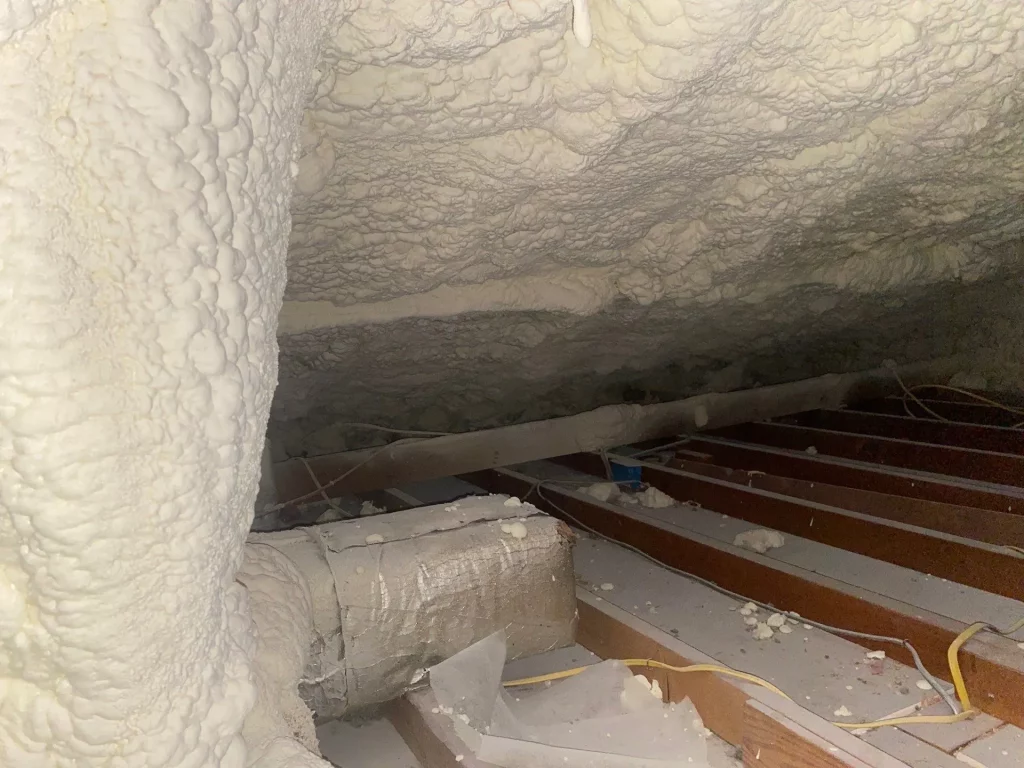
Common Questions
How Quickly Does Open-Cell Foam Cure?
Open-cell foam cures in just a few hours, allowing quick occupancy, unlike cellulose which may take days to dry in damp conditions.
How Durable Is Open-Cell Foam Insulation?
It lasts 20 to 30 years without degrading and resists pests better than untreated fiberglass, making it a long-term solution.
Does Open-Cell Foam Help With Noise Reduction?
Yes. Its density dampens sound transmission by 20–30% more than batts, which is especially useful in urban or noisy environments.
Wrapping Up Key Points
Open-cell spray foam excels in air sealing and moisture management over fiberglass and cellulose, while offering a cost-effective alternative to closed-cell for many homes. Weigh local climate, budget, and structure needs to pick the right fit.
Examine your home’s energy audit results and consult local pros to match insulation to long-term comfort and savings goals.
With growing interest in high-performance insulation, we’ve begun serving additional regions to support more homeowners across Texas. Click here to learn how this expansion ensures reliable open-cell installations backed by expert guidance.
Ready to Improve Your Home’s Insulation
For tailored advice on insulation options suited to Texas conditions, contact Stellrr at info@stellrr.com or call (512) 710-2839. Experts there assess specific setups to guide decisions based on real project outcomes. This step clarifies the best path forward without guesswork.
Questions Homeowners Ask Most
Does open-cell spray foam work in cold climates?
Yes, it performs well down to 20 degrees Fahrenheit, but pair it with ventilation to manage any minor moisture. In Texas winters, which rarely drop that low, it handles chill without issues.
How does it affect home resale value?
Adding spray foam boosts efficiency ratings, which appraisers note for 5 to 10 percent higher values in energy-conscious markets, according to the National Association of Realtors.
Is open-cell foam fire-resistant?
It includes flame retardants meeting ASTM standards, slowing spread compared to untreated cellulose. Always combine with smoke detectors.
Can DIYers apply open-cell foam?
No, professional equipment ensures proper expansion and safety. Kits exist but often lead to uneven coverage and void warranties from codes.
What about allergies to foam chemicals?
Off-gassing fades in days; sensitive individuals should vacate during install. It’s generally safer than fiberglass itching.
Sources
- U.S. Department of Energy – Government resource on air sealing benefits and energy savings from insulation types.
- Building Science Corporation – Research on air infiltration comparisons between insulation materials.
- Grand View Research – Market report detailing growth trends in spray foam insulation.


